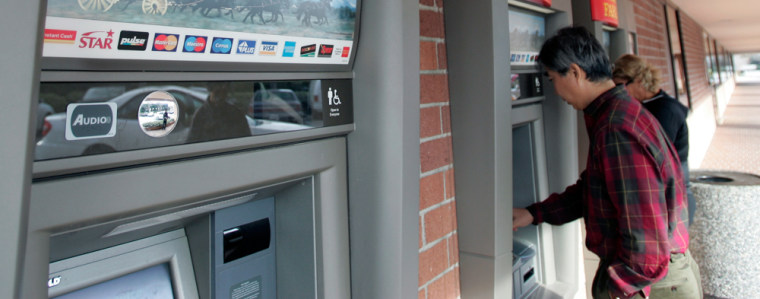ATMs around the world were handing out an estimated $26 billion Wednesday, business as usual for machines celebrating 40 years of doling out cash on street corners, inside fast food eateries, at convenience stores, airports and myriad other locations.
Although cash machines have a long pedigree — one version was set up in New York in 1939 — the first recognizably modern one was placed outside the Barclays PLC branch in Enfield, a north London suburb, on June 27, 1967.
Customers were supplied with special single-use vouchers which they would place into a drawer. After entering a personal identification number, a second drawer would spring open with a 10 pound note.
John Shepherd Barron, the machine’s inventor, said he came up with the idea after being locked out of his bank. Barron originally planned to make personal identification numbers six digits long, but cut the number to four after his wife Caroline complained that six was too many.
By the end of the 1960s, there were 781 automatic teller machines across the world, most of them in Britain, Barclays said.
Before long, the machines were linked by a series of bank networks, enabling customers of one bank to withdraw money from another bank’s ATM. The machines are now used to remotely access bank statements, make transfers and even recharge cell phone credits.
There are some 1.5 million ATMs across the globe — about 400,000 of them in the United States — according to the ATM Industry Association. They see an estimated 165 million withdrawals daily, according to Retail Banking Research.
One of the most remote is at the McMurdo station at the South Pole, where it serves a small population of Arctic researchers.
